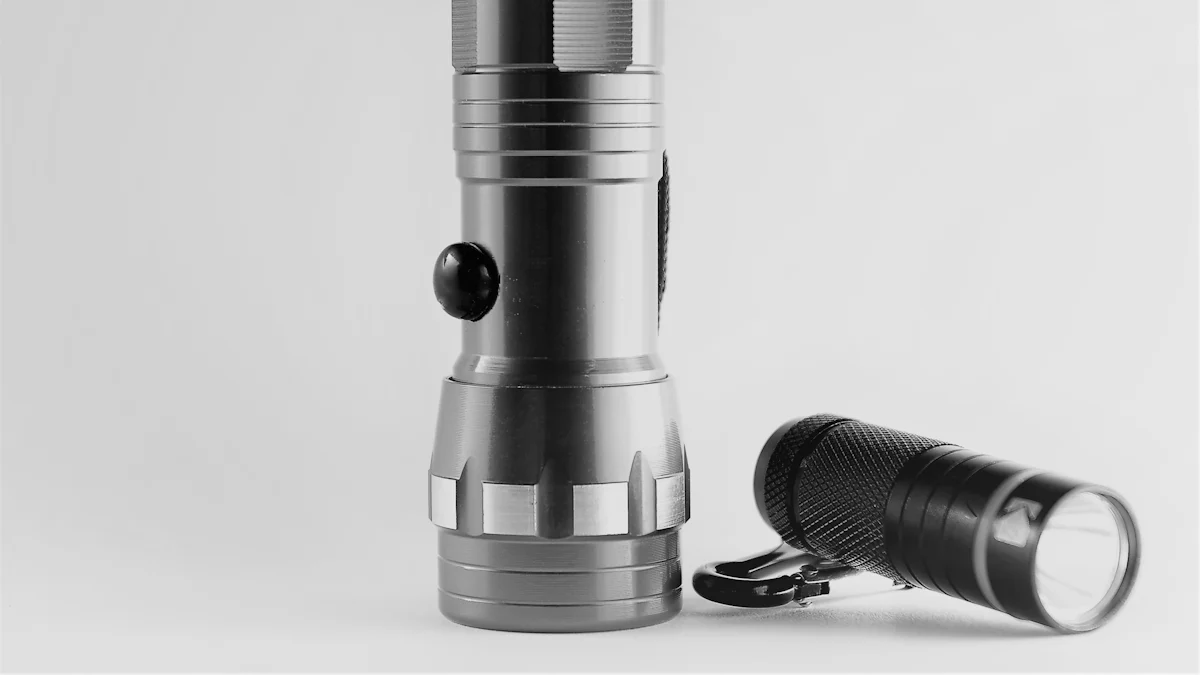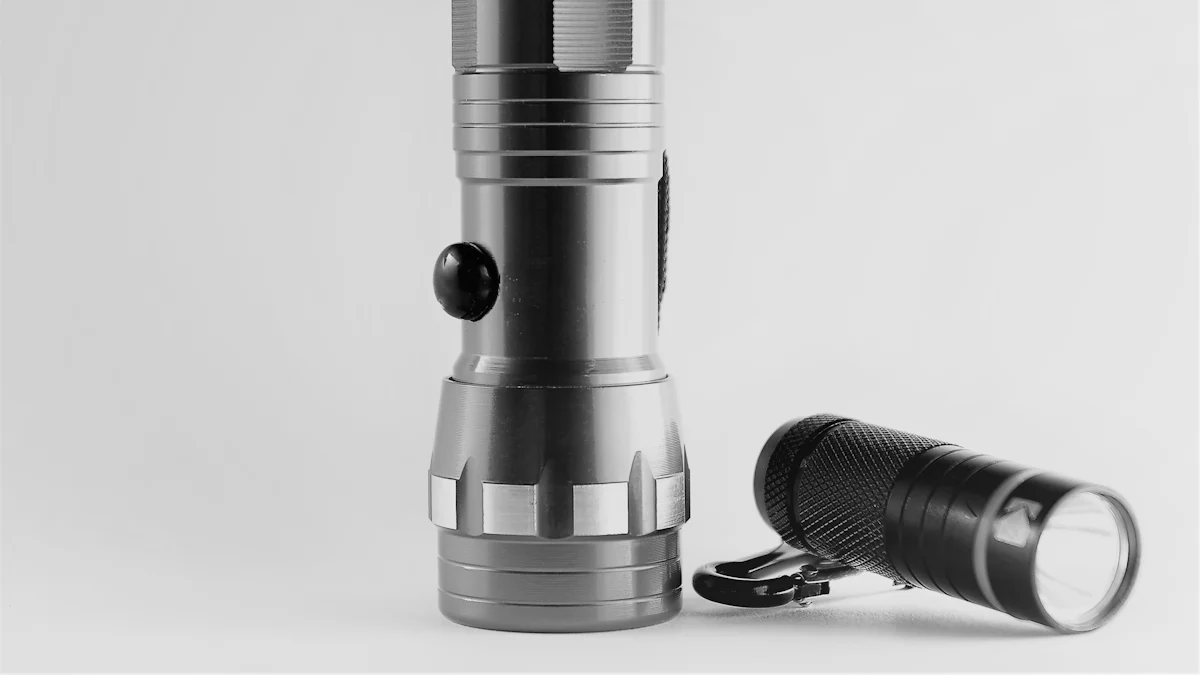Discovering Light: How Flashlights Really Work

How does a flashlight work? Flashlights play a crucial role in various situations, providing light when needed the most. Understanding the components of a flashlight is essential to grasp how these devices function effectively. This blog aims to shed light on the intricate workings of flashlights, explaining how they produce illumination through a combination of electrical circuits and light production mechanisms.
How Flashlights Work
Understanding the basic principle of how flashlights operate is essential to comprehend their functionality. In a flashlight, an electrical circuit is responsible for facilitating the flow of electricity from the power source to the light-producing component. This circuit ensures that the energy from the batteries reaches the light production mechanism, resulting in illumination.
Electrical Circuit
The electrical circuit in a flashlight serves as the pathway for electricity to travel.
It connects the power source to the light-producing element, enabling the conversion of electrical energy into light energy.
This circuit is crucial for maintaining a continuous flow of electricity, ensuring consistent illumination.
Light Production
The process of light production in a flashlight involves transforming electrical energy into visible light.
When electricity flows through either a tungsten filament or an LED, it causes these components to emit photons, generating light.
The interaction between the electrical current and the filament or LED results in the glow that illuminates the surroundings.
Exploring how a flashlight works unveils two primary technologies used for light production: tungsten filament bulbs and LED bulbs.
Tungsten Filament
Tungsten filament bulbs have been traditionally used in flashlights for their reliability and simplicity.
When electricity passes through the tungsten filament, it heats up and produces light through incandescence.
These bulbs are known for their durability and ability to provide steady illumination over time.
LED Technology
LED technology has revolutionized flashlight design with its efficiency and brightness.
LEDs operate by exciting electrons within a semiconductor material, causing them to release energy in the form of photons.
This process results in highly efficient light production with minimal heat generation, making LED flashlights popular for various applications.
By understanding these fundamental principles of how flashlights work, individuals can appreciate the intricate mechanisms behind these portable sources of illumination.
Components of a Flashlight

When examining a flashlight, it becomes evident that its functionality relies on several crucial components working together seamlessly. Understanding the role of each part is essential in comprehending how these devices produce illumination effectively.
Power Source
In a flashlight, the batteries serve as the primary power source, supplying the necessary electrical energy for the device to function. Without reliable batteries, the flashlight would be unable to generate light when needed.
Batteries
Batteries are essential for powering flashlights and ensuring they can produce light.
The stored energy within batteries enables the electrical circuit to function and illuminate the surroundings.
Different types of batteries can be used in flashlights, ranging from disposable alkaline batteries to rechargeable lithium-ion options.
Light Source
The light source in a flashlight plays a critical role in converting electrical energy into visible light that can brighten dark spaces effectively. Understanding the different types of bulbs used in flashlights sheds light on how illumination is achieved.
Tungsten Filament Bulbs
Tungsten filament bulbs have been a traditional choice for generating light in flashlights due to their reliability.
These bulbs operate by passing electricity through a tungsten filament, causing it to emit photons and produce visible light.
Despite advancements in LED technology, tungsten filament bulbs remain popular for their simplicity and consistent performance.
LED Bulbs
LED bulbs have revolutionized flashlight design with their efficiency and brightness levels.
When electricity flows through an LED bulb, electrons within the semiconductor material release energy in the form of photons.
The use of LED bulbs results in brighter illumination with lower energy consumption compared to traditional tungsten filament options.
Reflector and Lens
The presence of a reflector and lens in a flashlight significantly impacts how light is emitted and directed towards specific areas, enhancing visibility and focus when using the device.
Reflector Function
The reflector within a flashlight plays a crucial role in redirecting light rays emitted by the bulb.
By reflecting and focusing these rays forward, the reflector ensures that light is projected efficiently without dispersion or loss.
Lens Function
The lens of a flashlight acts as a protective cover while also influencing how wide or narrow the beam of light appears.
It helps control the spread of light emitted by the bulb, allowing users to adjust focus based on their needs for illumination.
By understanding these key components of flashlights – from power sources to light production elements like bulbs – individuals can gain insight into how these devices work cohesively to provide reliable illumination whenever required.
Future of Flashlight Technology

Advancements in LED Technology
LED technology continues to drive innovation in the realm of flashlight design.
Manufacturers are increasingly adopting LEDs due to their energy efficiency and long lifespan.
The transition from traditional incandescent bulbs to LEDs has revolutionized the flashlight industry.
LEDs consume less power, making flashlights more sustainable and cost-effective.
The durability of LEDs ensures that flashlights equipped with this technology last significantly longer.
Energy Efficiency Improvements
Flashlight developers are focusing on enhancing energy efficiency to meet modern sustainability standards.
By optimizing battery usage and light output, flashlights can operate for extended periods without frequent battery replacements.
Energy-efficient flashlights contribute to reducing environmental impact by conserving power resources.
The shift towards sustainable practices aligns with global efforts to promote eco-friendly technologies.
Improved energy efficiency not only benefits users but also supports a greener approach to portable lighting solutions.
Understanding the operational principles of flashlights reveals the shift towards LED technology for enhanced efficiency and durability.
High-performance flashlights draw significant current, making NiMH and lithium batteries ideal choices for such applications.
Flashlights often utilize multiple batteries to boost energy and voltage, with a chain of six alkaline batteries providing a 9 V difference between terminals.
2024/6/3
See Also
Exploring Various Flashlight Varieties
Flashlight Progression: From Past to Present Advancements
Comparing Police Flashlights with Standard Ones
Contrasting Diving Flashlights and Regular Ones
Selecting the Perfect Household Flashlight: An In-Depth Manual
